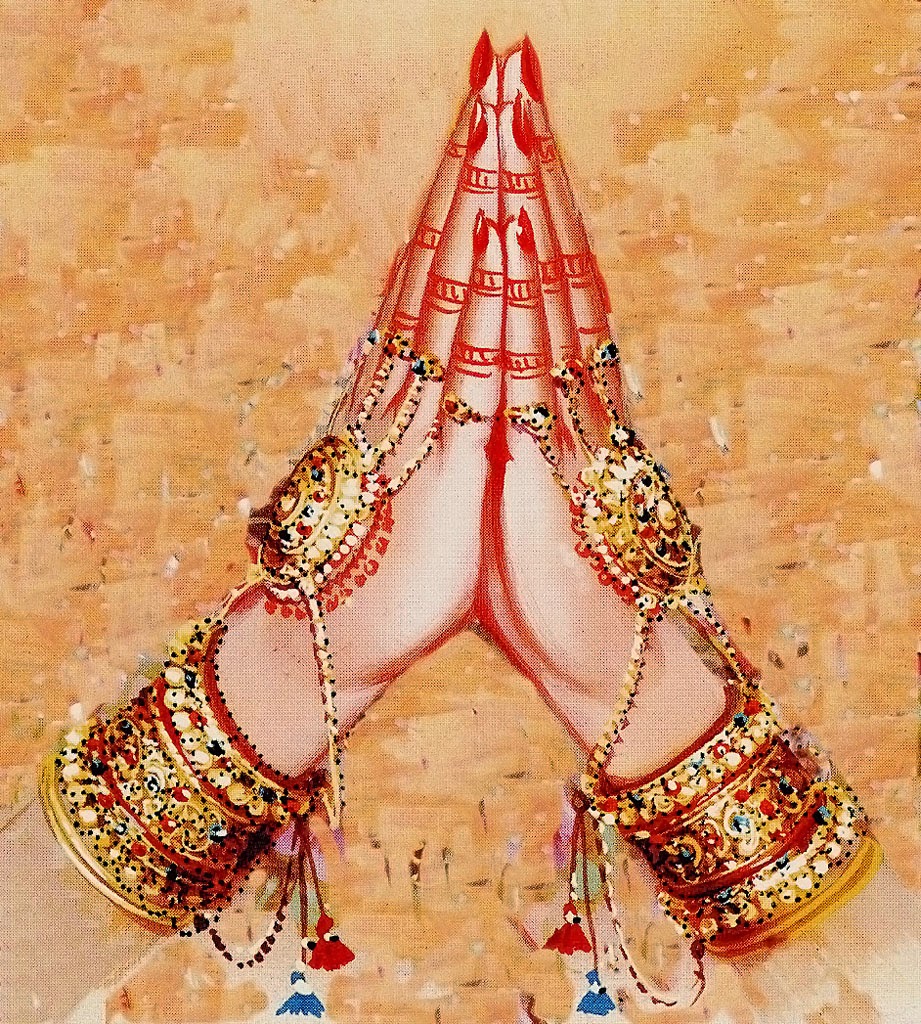Namaste is a term that has transcended cultural boundaries and found its way into the hearts and minds of people around the globe. Originating from the rich tapestry of Indian culture, this simple yet profound greeting encapsulates a deep sense of respect, reverence, and connection. As yoga and meditation practices gain popularity in the West, the question of “what does namaste mean” has become increasingly relevant. This article aims to uncover the layers of meaning behind this beloved salutation and how it reflects a broader philosophy of mindfulness and unity.
At its core, namaste is more than just a word; it is a gesture that embodies the spirit of community and togetherness. When someone brings their palms together in a prayer-like position and bows their head while saying “namaste,” they are engaging in a form of non-verbal communication that transcends language. It is a symbolic acknowledgment that the divine within the speaker recognizes the divine within the recipient, fostering a sense of equality and mutual respect.
As we delve deeper into the significance of namaste, we will explore its etymology, cultural significance, and how it is used in various contexts. This exploration not only answers the question of “what does namaste mean” but also invites us to reflect on our own interactions and the importance of cultivating kindness and understanding in our daily lives. Join us on this journey of discovery as we unravel the layers of meaning behind this cherished term.
What is the Etymology of Namaste?
The word "namaste" is derived from two Sanskrit words: "namah," meaning to bow or to honor, and "te," meaning you. Together, they create a phrase that translates to "I bow to you" or "I honor you." This linguistic breakdown reveals the essence of the term, emphasizing respect and acknowledgment of another person’s presence.
How is Namaste Practiced in Daily Life?
In many cultures, particularly in India, "namaste" is a common greeting used in both formal and informal settings. It is often accompanied by a slight bow and the joining of palms at the heart center, a gesture known as "anjali mudra." This practice is not limited to verbal communication; it is also seen in yoga classes, meditation sessions, and spiritual gatherings.
Why Do People Use Namaste in Yoga?
In yoga, the practice of saying "namaste" at the end of a session holds particular significance. It serves as a reminder of the shared energy among practitioners and the teacher. By acknowledging one another through this greeting, participants foster a sense of community and connection, reinforcing the idea that we are all on a shared journey of growth and self-discovery.
What Does Namaste Mean Beyond the Literal Translation?
While the literal translation of "namaste" focuses on respect and honor, its deeper meaning encompasses a spiritual connection. It represents the belief that we are all reflections of one another, interconnected through our shared humanity. This understanding invites us to practice empathy, compassion, and kindness in our daily interactions.
Can Namaste be Used in Different Cultures?
Although "namaste" has its roots in Indian culture, its usage has spread globally, particularly among those who practice yoga and mindfulness. In Western cultures, it has been embraced as a way to convey respect and goodwill, often used in spiritual and wellness communities. However, it is essential to be mindful of its cultural origins and use the term with the respect it deserves.
What Are Some Common Misconceptions About Namaste?
One of the most common misconceptions surrounding "namaste" is that it is simply a trendy phrase used in yoga classes. While it has gained popularity in wellness circles, its significance extends far beyond that. It is crucial to understand that "namaste" is rooted in a rich cultural and spiritual tradition that deserves to be honored and respected.
How Can We Incorporate Namaste into Our Lives?
- Practice mindfulness: Take a moment each day to acknowledge the people around you.
- Use the gesture: When greeting others, consider combining the word with the gesture of joining your palms.
- Reflect on connections: Think about the ways you are connected to others and how you can foster a sense of community.
- Learn about the culture: Educate yourself about the origins of "namaste" and its significance in Indian culture.
Conclusion: What Does Namaste Mean in Our Lives?
In conclusion, the question "what does namaste mean" invites us to reflect on the importance of connection, respect, and community in our lives. As we navigate our interactions with others, adopting the spirit of "namaste" can serve as a guiding principle, encouraging us to honor the divine within ourselves and others. By doing so, we create a ripple effect of kindness and understanding that can touch the lives of those around us, ultimately making the world a more compassionate place.
Article Recommendations
- The Untold Truth About Asap Rockys Brother
- Calvin Austin Jr Highlights News
- Kim Mathers Net Worth 2023 A Deep Dive


